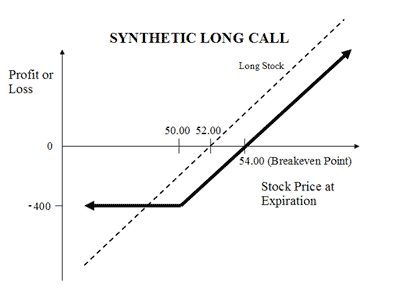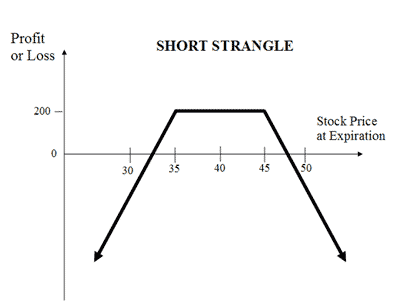 Zerodha (Trading & Demat Account)
Zerodha (Trading & Demat Account)
FREE Equity Delivery and MF
Flat ₹20/trade Intra-day/F&O
 Zerodha (Trading & Demat Account)
Zerodha (Trading & Demat Account)
FREE Equity Delivery and MF
Flat ₹20/trade Intra-day/F&O

|
|
Compare Synthetic Call and Short Strangle (Sell Strangle) options trading strategies. Find similarities and differences between Synthetic Call and Short Strangle (Sell Strangle) strategies. Find the best options trading strategy for your trading needs.
| Synthetic Call | Short Strangle (Sell Strangle) | |
|---|---|---|
 |
 |
|
| About Strategy | A Synthetic Call strategy is used by traders who are currently holding the underlying asset and are Bullish on it for the long term. But he is also worried about the downside risks in near future. This strategy offers unlimited reward potential with limited risk. The strategy is used by buying PUT OPTION of the underlying you are holding for long. If the price of the underlying rises then you make profits on holdings. If it falls then your loss will be limited to the premium paid for PUT OPTION. | The Short Strangle (or Sell Strangle) is a neutral strategy wherein a Slightly OTM Call and a Slightly OTM Put Options are sold simultaneously of same underlying asset and expiry date. This strategy can be used when the trader expects that the underlying stock will experience a very little volatility in the near term. It is a limited profit and unlimited risk strategy. The maximum profit earn is the net premium received. The maximum loss is achieved when the underlying moves either significantly upwards or downwards at expiration. A net credit is taken to enter into this strategy. For this reason, the Short Strangles are Credit Spreads. The usual Short Strangle Strategy looks like as below for NIFTY current index value at 10400 (NIFTY S... Read More |
| Market View | Bullish | Neutral |
| Strategy Level | Beginners | Advance |
| Options Type | Call + Underlying | Call + Put |
| Number of Positions | 2 | 2 |
| Risk Profile | Limited | Unlimited |
| Reward Profile | Unlimited | Limited |
| Breakeven Point | Underlying Price + Put Premium | two break-even points |
| Synthetic Call | Short Strangle (Sell Strangle) | |
|---|---|---|
| When to use? | A Synthetic Call option strategy is when a trader is Bullish on long term holdings but is also concerned with the associated downside risk. |
The Short Strangle is perfect in a neutral market scenario when the underlying is expected to be less volatile. |
| Market View | Bullish |
Neutral When you are expecting little volatility and movement in the price of the underlying. |
| Action |
The strategy is used by buying PUT OPTION of the underlying you're holding for long. If the price of the underlying rises then you make profits on holdings. If it falls then your loss will be limited to the premium paid for PUT OPTION. |
Sell 1 out-of-the-money put and sell 1 out-of-the-money call which belongs to same underlying asset and has the same expiry date. |
| Breakeven Point | Underlying Price + Put Premium |
two break-even points A strangle has two break-even points. Lower Break-even = Strike Price of Put - Net Premium Upper Break-even = Strike Price of Call+ Net Premium" |
| Synthetic Call | Short Strangle (Sell Strangle) | |
|---|---|---|
| Risks | Limited Maximum loss happens when price of the underlying moves above strike price of Put. Max Loss = Premium Paid |
Unlimited The maximum loss is unlimited in this strategy. You will incur losses when the price of the underlying moves significantly either upwards or downwards at expiration. Loss = Price of Underlying - Strike Price of Short Call - Net Premium Received Or Loss = Strike Price of Short Put - Price of Underlying - Net Premium Received |
| Rewards | Unlimited Maximum profit is realized when price of underlying moves above purchase price of underlying plus premium paid for Put Option. Profit = (Current Price of Underlying - Purchase Price of Underlying) - Premium Paid
|
Limited For maximum profit, the price of the underlying on expiration date must trade between the strike prices of the options. The maximum profit is limited to the net premium received while selling the Options. Maximum Profit = Net Premium Received |
| Maximum Profit Scenario | Underlying goes up |
Both Option not exercised |
| Maximum Loss Scenario | Underlying goes down and option exercised |
One Option exercised |
| Synthetic Call | Short Strangle (Sell Strangle) | |
|---|---|---|
| Advantages | Provides protection to your long term holdings. |
The strategy offers higher chance of profitability in comparison to Short Straddle due to selling of OTM Options. |
| Disadvantage | You can incur losses if underlying goes down and the option is exercised. |
Limited reward with high risk exposure. |
| Simillar Strategies | Married Put | Short Straddle, Long Strangle |

Add a public comment...

FREE Intraday Trading (Eq, F&O)
Flat ₹20 Per Trade in F&O
|
|